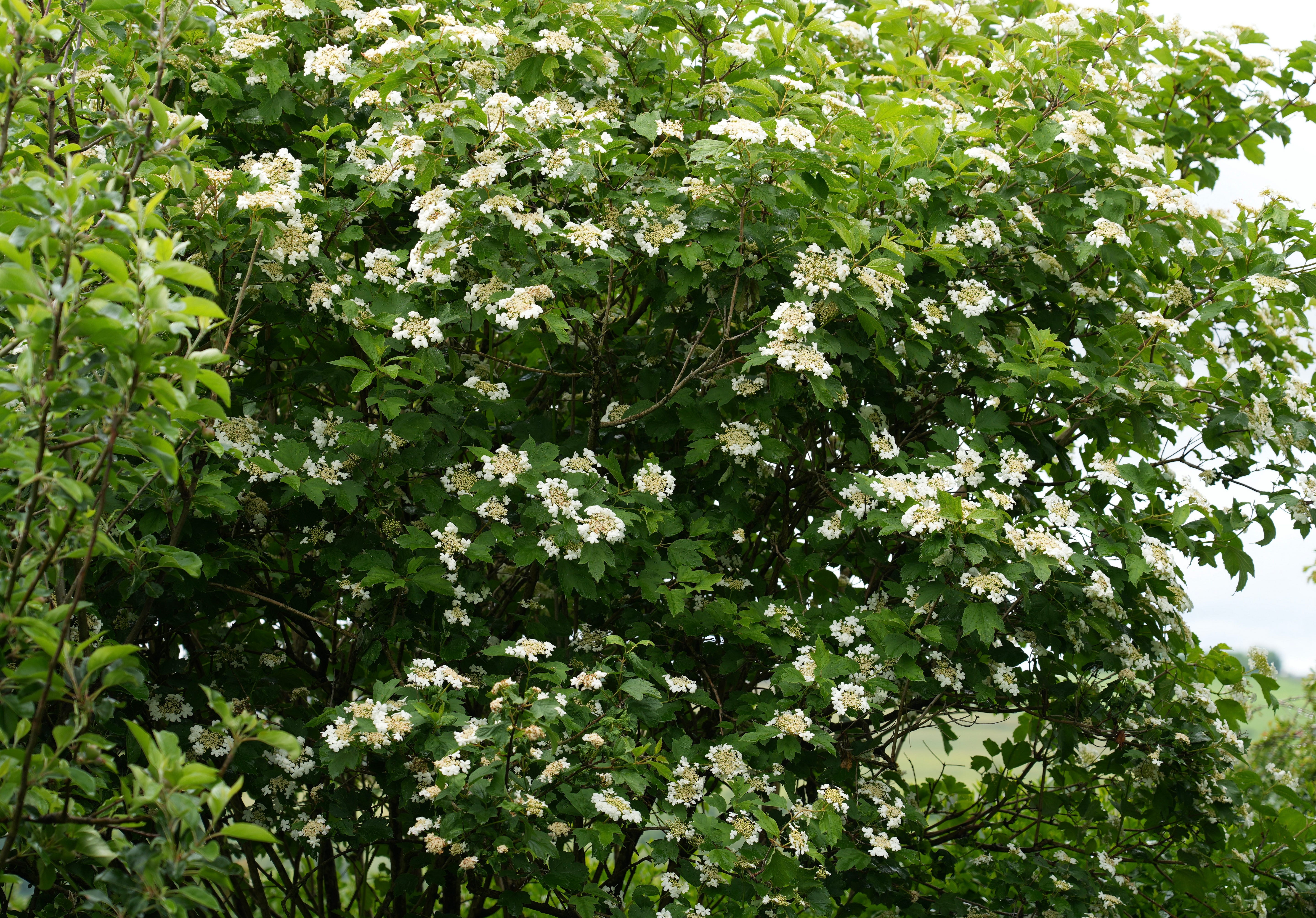When wild viburnums look this good, why have we been bothering with cultivated ones?
Viburnum opulus first came onto my radar one winter during my walks along the Surrey Hills. In the dull grey, red berries of the guelder rose shone out.
Here on our farm in Yorkshire, we’re lucky to have one at the bottom of the garden as well as a few dotted among our mixed hedges.
It’s a shrub of short moments through the seasons. From the winter stems, emerging spring leaves, early-summer flowers, autumn colours and translucent red berries. None last particularly long but each is as beautiful as the next.


